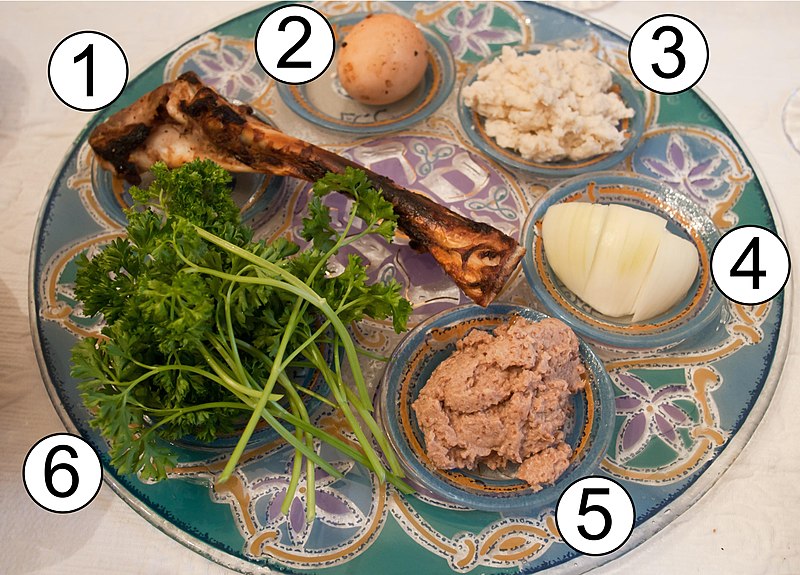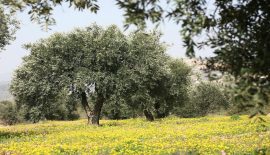Seder Plate – Signs of the Faith
In this series, ‘Signs of Faith’, objects, procedures and concepts that express Jewish faith are explained and discussed.
Many of you will know the matzah, the unleavened ‘bread of affliction’ that the Israelites ate in Egypt and which is still an important element in the Passover celebration. Another essential element mentioned in the Bible is the paschal lamb. However, since the destruction of the temple, no Passover lamb could be slaughtered, at least according to Orthodox Jewish tradition.
But at the Seder, on the first night of Passover, a number of symbolic dishes still appear on the table. They are not mentioned in the Bible, but in ancient times they were part of the festive banquet that formed the basic pattern for the Seder celebration. Gradually they took on symbolic significance. They are usually placed together on small platters on a special plate, the seder plate, or in round recesses in the plate.
In terms of arrangement, different communities have different customs. That too can have a symbolic meaning, but that would take us too far for now. In any case, the following things are on the plate:
Zeroa (leg): This can be a roasted lamb bone, but because no Easter lamb can be slaughtered until there is a temple, a roasted chicken leg is usually put down.
Beitzah (egg): An egg that is hard-boiled and then roasted. The egg recalls the festive offering that was traditionally brought to the temple on Passover (and other feasts) in addition to the regular sacrifices. The egg is also seen as a symbol of mourning on the one hand, and renewal of life on the other.
Maror (bitter herb): Usually lettuce is taken for this. The bitter taste symbolises the bitterness of slavery in Egypt.
Charoset: A sweet mixture of apple, nuts and wine, whose greyish colour recalls the mortar of the bricks in Egypt, but whose sweet taste also evokes liberation.
Karpas: Vegetable, usually parsley, is dipped in salt water at the beginning of the meal and eaten as an amuse bouche, as is customary at a festive dinner. It also symbolises spring.
Chazeret: Radish or horseradish, the sharp taste also symbolises the bitterness of slavery in Egypt.
While telling the story and eating, you literally taste slavery and liberation.






